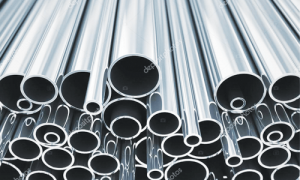Platinum plating solutions provide countless benefits to the end-user, making it an extremely popular surface finishing option and an overall great investment for your applications, regardless of the industry you’re in.
Platinum plating is the deposit of a thin layer of platinum metal on a substrate, typically in the 0.5 to 5-micron range (0.00002”-0.0002”) and is commonly used in water purification, oil refining, automotive, energy production, and medical industries.
Pure platinum is a white metal, similar in appearance to silver. Although its occurrence is rare in nature, it can now be found in up to 20% of consumer goods produced around the world.
Platinum is one of the most ductile of pure metals and is also very malleable, though less so than gold. It does not tarnish in air or dissolve in most acids, and it has a very high melting point of 3,215 °F which makes it ideal for industrial applications.
Benefits of Platinum Plating
Platinum plating solutions offer a non-reactive surface, making platinum a highly sought-after finish for parts that require stability, be it electrical conductivity for low voltage contacts, or environmental protection from oxidizing or corrosive elements. The properties of platinum make for an ideal coating for promoting corrosion protection, durability and hardness, and thermal protection.
Durability
Platinum is highly durable, which means that mechanical parts coated in platinum operate for longer periods of time. Increased hardness imparted by the platinum layer makes parts less susceptible to denting, wearing, and scratching. The thicker the platinum layer, the more durable the parts become.
Corrosion Resistance
Platinum is stable in most environments and will not corrode – in fact, platinum is only known to dissolve in hot aqua regia, a mixture of hydrochloric and nitric acids, and is resistant to most other acids and corrosive products. It has been known to act as a sacrificial barrier to some substrates, preventing corrosion from reaching the base material.
Platinum does not readily tarnish and form a passive oxide layer, as does silver and copper, but resists tarnishing and therefore increasing the lifespan of individual parts. This property will help to maintain contact resistance levels and low voltage contacts in electrode applications.
Heat Resistance
Platinum’s high melting point of 3,215 °F and resistance to oxidation make it an ideal coating for high-temperature applications such as aerospace and energy generation. Temperatures that are normally destructive to most metals can be reached with platinum without experiencing some of the common negative impacts, such as fatigue, softening, cracking, and high-temperature corrosion.
Contact the Experts at Silvex Inc.
Silvex Inc. has over 50 years of experience providing quality finishes across numerous industries ranging from defense and firearms to aerospace and hotelware. We are specialized in platinum plating on a variety of surfaces including stainless steel, titanium, brass, copper, aluminum and more.
To learn more about our platinum plating solution options, please contact us today or read about Silvex Inc. being featured in Products Finishing Magazine.

